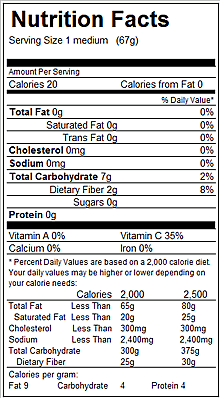is solely known for being used in the famous dessert, Key Lime Pie. People who order this dessert usually crave a sour bite, which Key limes deliver well. These limes are traditionally much smaller than your average lime and are amped up with acidic flavor. There are also Persian limes, desert limes, and kaffir limes. Persian limes are what one commonly comes across in the United States, and is probably your typical idea of a lime.
Let’s say you pick up a medium size lime to add onto tonight’s homemade fajitas. You’re likely looking at around 20 calories, high content of vitamin C, and other vitamins and minerals such as iron, potassium, calcium, fiber, and more. What these nutrition facts tell us right off the bat is that limes alone are a great source of antioxidants for being such little guys! The active compounds defend your body against the free radicals that try and compromise it – and we always want to make sure we have those powerful, fighting antioxidants on deck. Because of the amount of vitamin C, about 20% of your daily intake, you can expect limes to have a helping hand in boosting immunity, promoting healthy skin, and help reduce the risk of heart diseases. One of the most interesting parts about citric acids, such as the amount in limes, is that it forms citrate and helps prevent kidney stones. People who eat more citrus are known to have a much lower risk of kidney stones, and judging how painful they can be, it makes you want to load up on that citrus!
Whether you are looking to add some lime zest to your dish for aromatic pleasure, create a lime-centered dish such as Key Lime Pie, top off the perfect vodka tonic, or even help as a cleaning agent due to the antimicrobial properties in them – there is bound to be a place for limes in your life.
As with everything good in life, there must come downfalls. It’s important to note that as good as that citric acid is for fighting off cancer radicals and promoting a healthy internal being, there is a point where too much citrus acid should be cautionary. For example, if you are someone prone to acid reflux or cavities – although the effects on each are separate – you will want to watch your citrus acid intake and keep it at a limited amount. The best way to do this is to listen to your body and if you notice your acid reflux or heartburn acting up, think about the citrus you’ve been consuming. If your teeth seem like they are losing their shine and you consume lemon and lime in your water daily; for example, you may be experiencing a bit of erosion since the acid is powerful on enamel. There is a happy medium for everything, and it varies per person.




